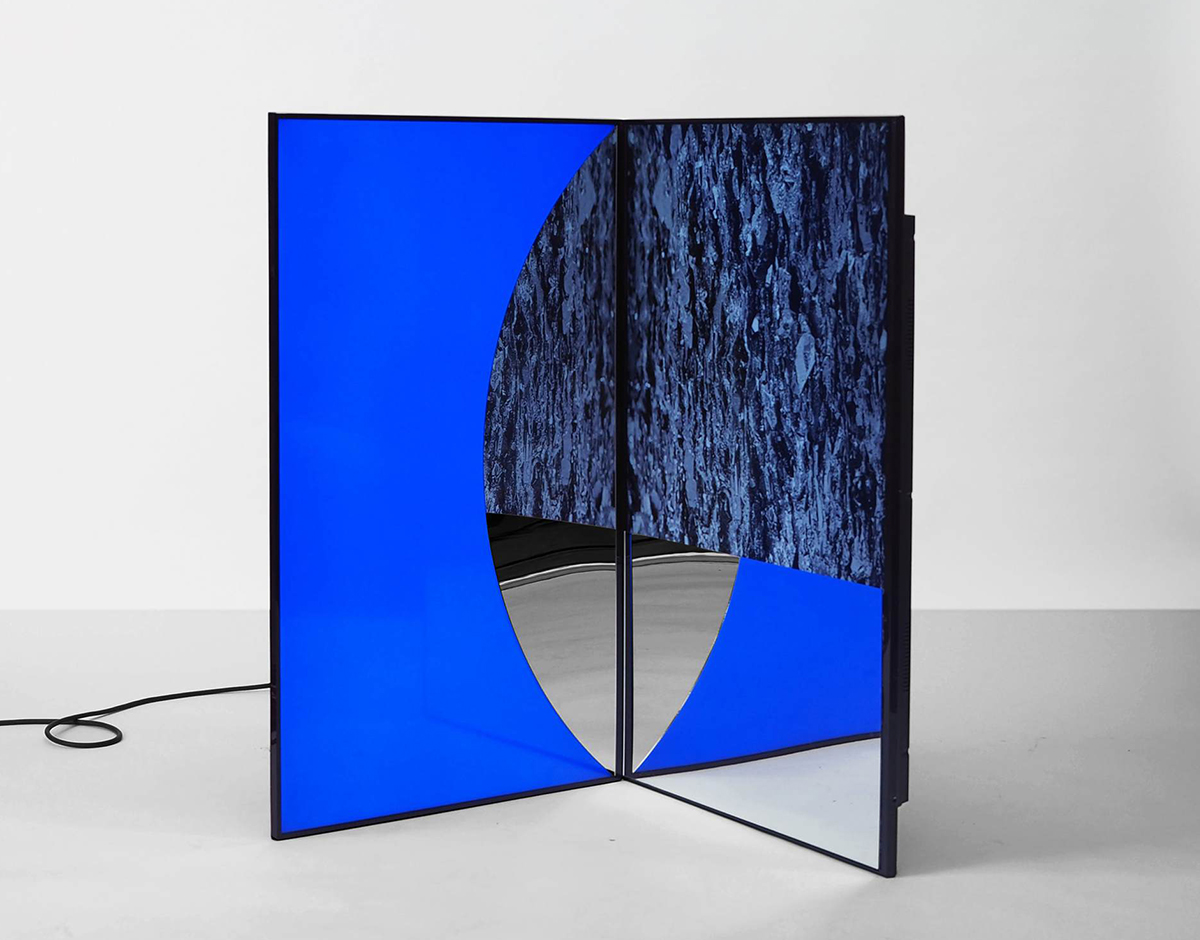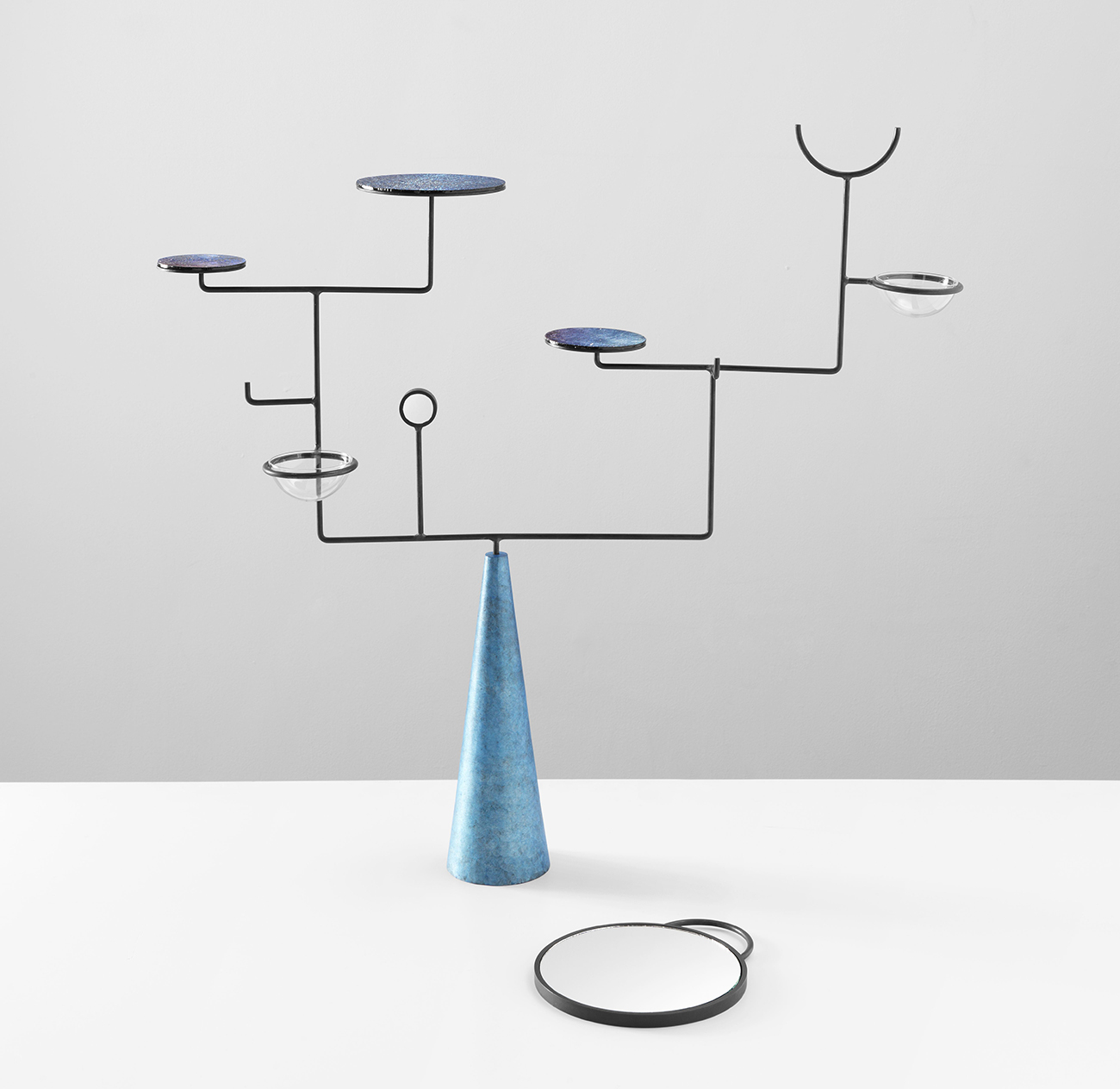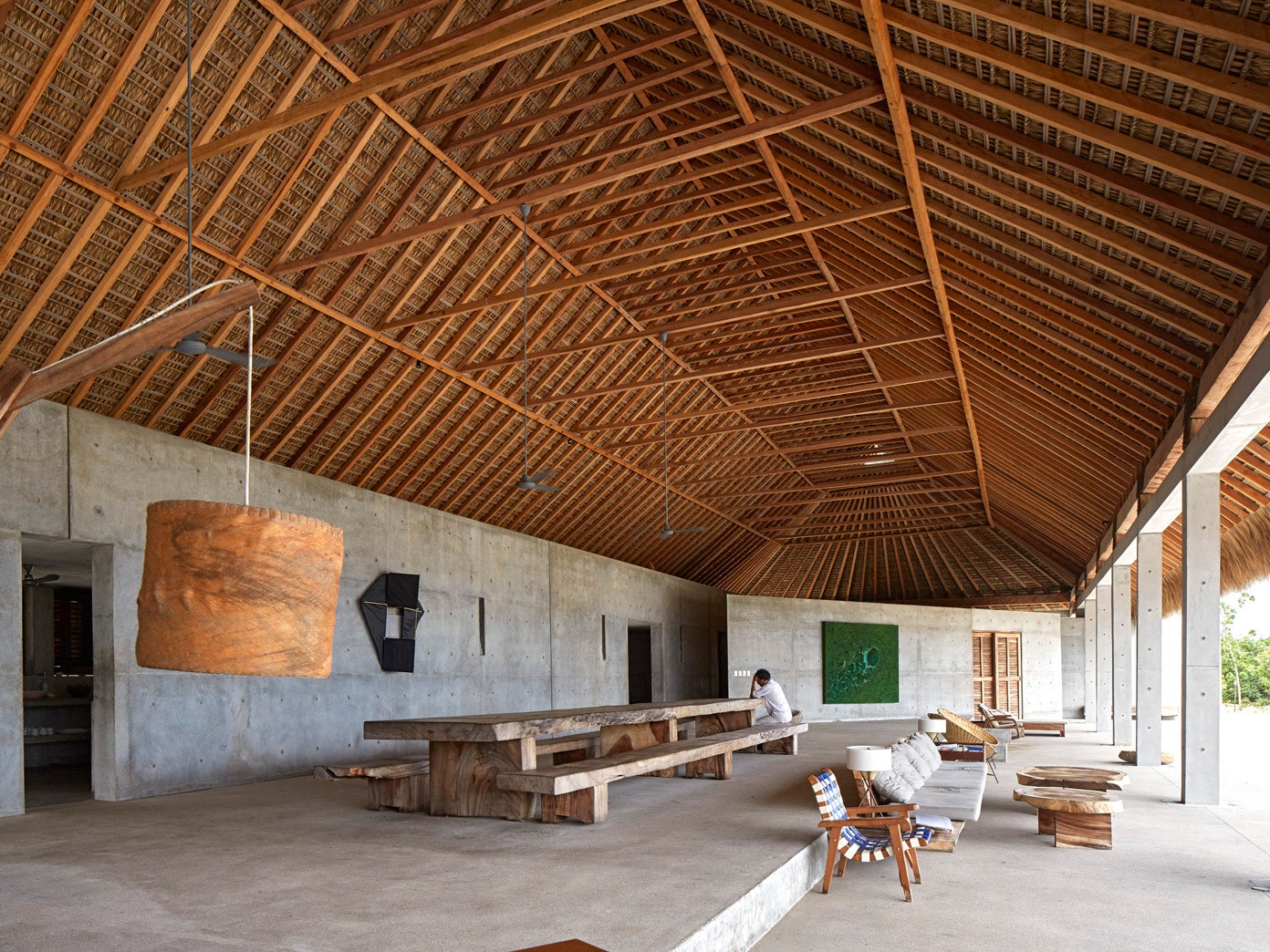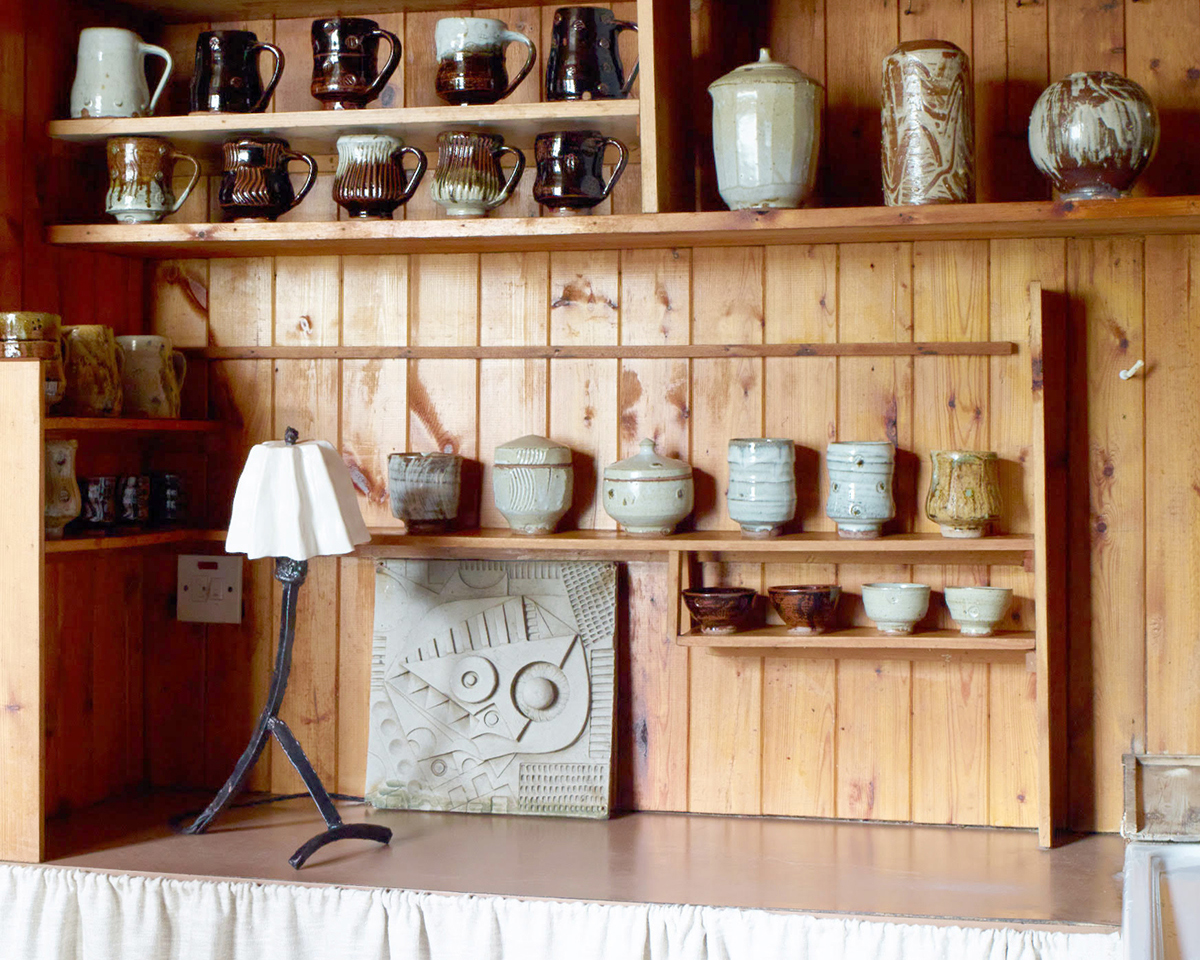
01.15.24
Up and Coming
Born in Philly and Based in London, Andrew Pierce Scott Has a Knack for Turning Discards Into Drama
Metamorphosis is at the heart of what Andrew Pierce Scott does. The London-based American designer has a talent for taking leftovers and discards and turning them into sculptural metal furniture and objects or an evocative textile still-life. In Scott’s hands, recycled sheet steel becomes a lamp with a darkened yet almost iridescent finish; fabric scraps become a plate of oysters and glasses of wine that make you immediately wish for the pleasures of good company and a good meal.
Scott traces this interest in transformation back to his time as an undergrad at Kenyon College, where he had almost round-the-clock access to a workshop for metal and woodworking and would braze steel wire into kinetic busts and figures. “There was something almost magical about this process, whereby you take this flimsy material — which can be bent easily in your hands — and through the act of brazing a couple joints in the right places you can create something which is sturdy and transcends the limitations of the material in its unworked state,” he says. “I also love how with metal, whether brazing or welding it together, you’re able to create volume and mass, something that takes up space very quickly with very few tools or machines. I love how it feels close to an act of play; how you can ‘draw in space’ with metal wire or create extremely solid sculptures from just tacking together pieces of scrap metal.”
After college, and a move to Philadelphia, Scott joined BDDW, which proved to be an “accidentally crucial moment” in his creative path. “I saw a version of something I could see myself working towards. The objects they create are beautiful, but I was more impressed with the sort of ‘make everything’ ethos they have. The handmade plugs and sockets for their lighting; the fabric they designed for their upholstery and clothes; the clay they dug up from the back of the workshop to create their ceramics — there was this range of vision which was almost world-building, while at the same time an almost obsessive attention to each detail within that world, which had a great impact on me.”
Pursuing a graduate degree in product design, which he did at the Royal College of Art in London, offered a chance to both focus and explore. “Being around other makers, seeing what they were working on, interested in, or reading, was eye-opening. I got to work on things I wouldn’t necessarily have imagined myself doing, such as creating instruments from waste, and creating an ensemble (in an ongoing collaboration with composer Hangrui Zhang from the Royal College of Music, who creates contemporary-classical scores which are performed using my instruments), to creating a family of functional objects made from material I found on the Thames foreshore during low tide.”
It was at the RCA that he started investigating the material and structural properties of the steel cooking oil barrels you see left out on the curbs outside restaurants all over London. “I was curious to see how far I could push this quite flimsy, and negligible material. Could I turn it into volumes to create pieces of furniture? Could it be structurally sound if it had decent welds in the right places?”
Since graduating in 2021, Scott has continued making objects from sheet steel and moved into experimenting with fabric, as well as collaborating with Natalia Triantafylli on pieces that mix metal with ceramics. Meanwhile, he’s been working for the sculptor Antony Gormley, whose art he was first introduced to in college. “It has been an absolute privilege to be a part of the team there, to work for someone who pointed the way early on. I have been able to learn so much from the crew there about different aspects of metalworking and making, which weren’t necessarily part of my practice before, but which are becoming more and more incorporated into it.” Over email, Scott filled us in on where his own work has been and where it’s going.
PHOTOS BY ATELIER LK & RICHARD ROUND-TURNER
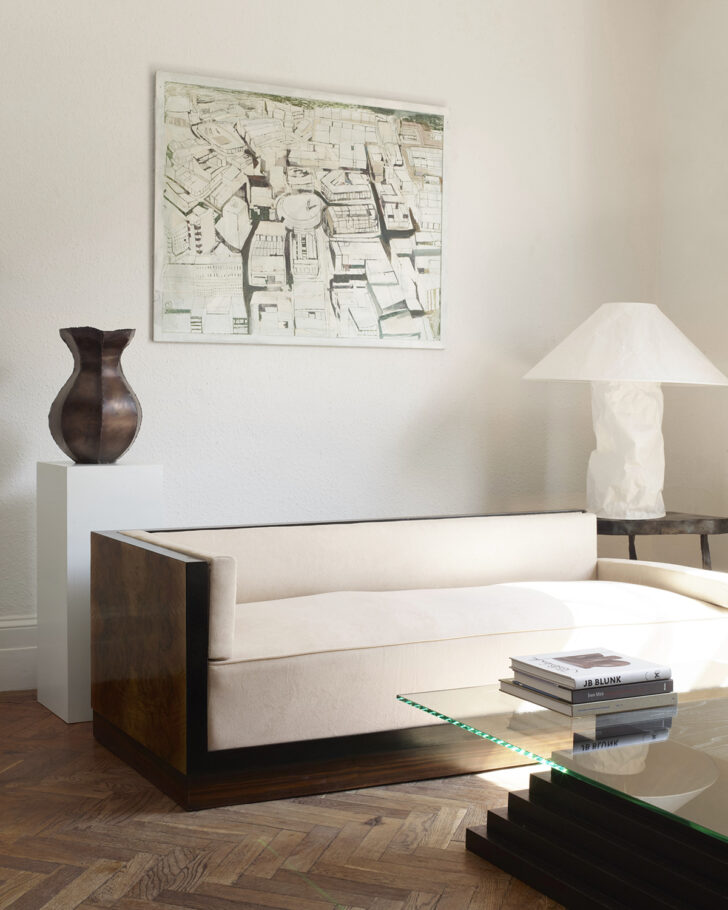
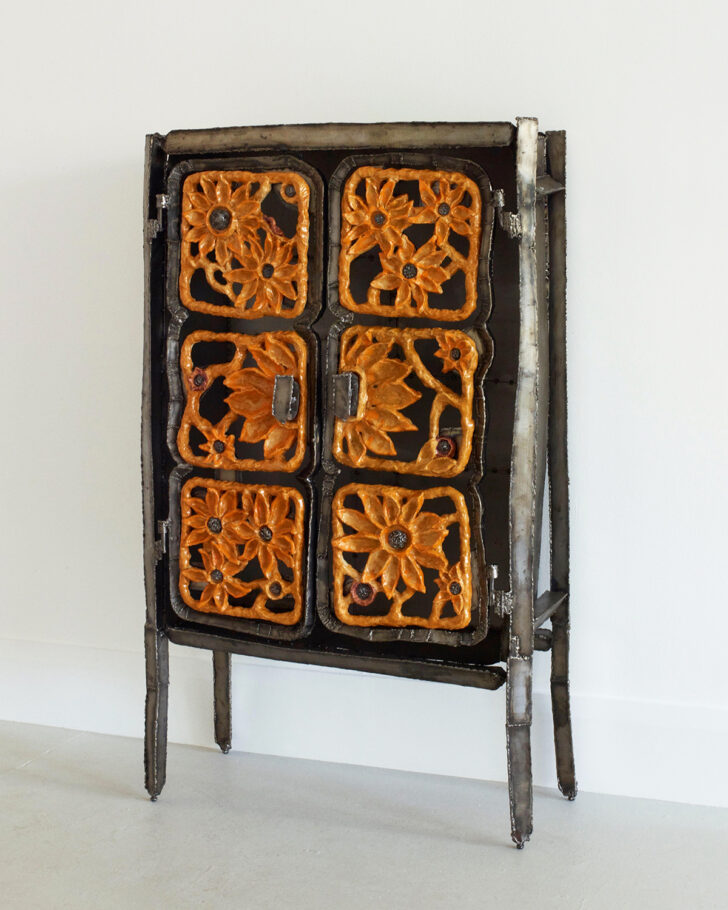
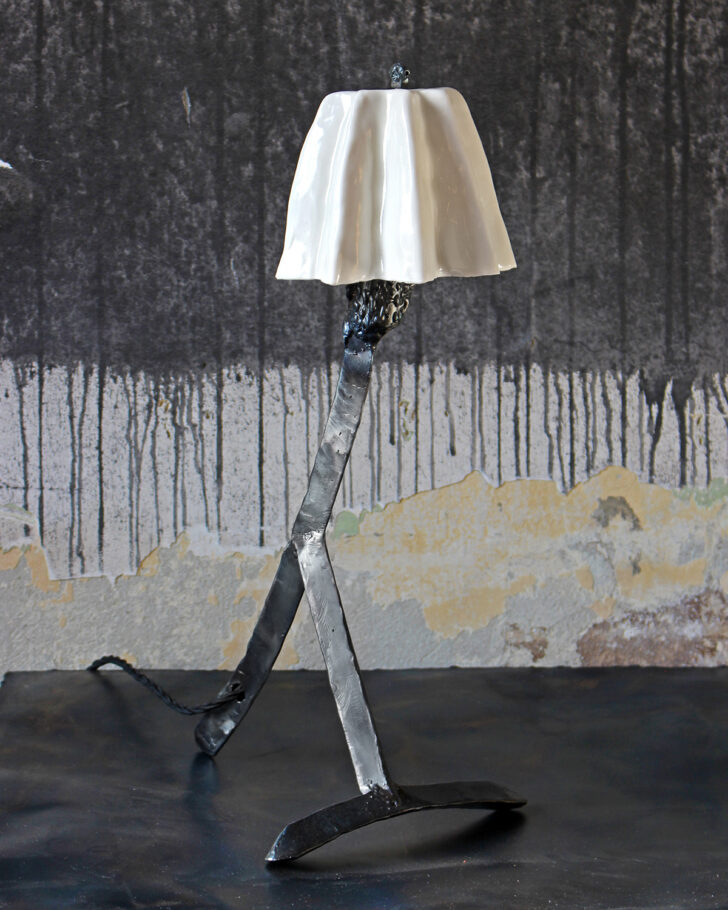
The element of chance plays a large role in your work. Do you see that in terms of the materials you decide to work with (found metals or fabric scraps) or does it also extend to other ways you approach your work?
I definitely feel that chance plays a large role in my work — not just in the materials I choose but throughout the making process. Especially in the beginning of a project, I like being open to whatever materials are at hand, whether those are metal barrels to be turned into furniture; grocery bags and broom handles to be turned into bagpipes and flutes; or a random bunch of fabric to be made into a still life scene. I find that when I work with whatever is at hand, I am less precious about the material, and because of that, because I’m able to have a certain sense of play about the making process. I can end up with more interesting results or surprises than if I’d been hemmed in by the idea that something has to be done with a specific, particular material. I find it more enjoyable to problem solve through a material, test its limits, see what it can do, and go from there.
When I cut the shapes of metal freehand and then start tacking and welding them together, there is often a back and forth between myself and the material, where chance is in play and where the material has a ‘say’ in the final outcome. The tacking and the heat generated in the welding process makes the sheet steel volumes twist slightly, which I find really interesting and more engaging than if they adhered to a rigid plan. I also enjoy taking the offcuts of sheet metal I generate from cutting out shapes and thinking of ways to cobble these scrap pieces together into something that people can respond to.
The tabletop still lifes you make from scrap fabric are so great. I’m curious about their composition —are they based on actual scenes or imagined scenarios? They obviously tie into a long tradition of still-life painting, but is there something about the notion of sitting down to a meal at a table that particularly interests you? Do you think you might extend this process to other kinds of scenes or images?
The scenes I make are mostly in my head, but sometimes I’ll take a photo or screenshot of some composition or dish which I find to be visually interesting. At the end of the year at the RCA, the fashion students would leave their unwanted fabrics and textiles in a massive pile in the fashion studio, and we were able to go through them before they were disposed of. So I’d amassed a ton of fabric, about as much as I could reasonably fit in the cupboards and limited storage in my flat, which I’d go through and use to make costumes or mostly ill-fitting pieces of clothing. It wasn’t until the end of my time at the RCA, when I was working on my final projects for the exams, that I started making these still life scenes from fabric.
I remember being at home one day, and the workshops were closed so I couldn’t do much, but I was daydreaming about having a bite to eat at St. John [Smithfield restaurant in London], which I couldn’t really justify with so much coming due. Being a bit restless, I just went ahead and made an ad hoc scene with a whole fish, and then a subsequent one with bone marrow, a glass of wine and other objects. So they started as a sort of wish or hope made manifest in fabric. I couldn’t really have them in person but I’d create their likenesses, which were a bit whimsical and brought me joy, and gave an outlet to all the different shades and textures of the fabric I’d collected.
But I like creating these scenes of table settings because in their fleetingness, we are somewhat reflected in those objects; maybe they make us pause and consider these everyday moments and the beauty and poignancy they hold. But maybe it’s more so because I find these objects to be so graphically interesting, and I love going through my collection of fabric and almost creating a menu, imagining what the different colored and textured cloth can become: turning a green velvet swatch into the skin of a fig, a bunch of sage, or the dark, shadowed edge of a Dover sole; imagining a scrap of pink satin being a slice of mortadella, the shell of a shrimp, or the light reflected off the surface of wine in a glass. I am drawn to this sort of open-ended problem solving where things are shifting constantly and little is predefined. I would be keen to open up this method of making to other kinds of scenes and images. I’ve always been interested in figurative work so maybe that’s the next direction that these pieces take, or start to veer into. Although I feel like I still have some pieces in this still life vein that I’m interested in realizing. I’d also like to play a bit with scale, and potentially go quite a bit bigger than I have so far. I think about Guttuso’s “Vucciria,” and ancient Roman “unswept floor mosaics,” among other works, which show this quotidian but beautiful bounty which is around us. I also had the chance to see the Unicorn Tapestries at the Cloisters in New York for the first time this past fall and I was struck by the meticulous attention given to details like individual blades of grass, various plants and blossoms, etc. This ode to the natural world, and maybe the magical-realism therein, which isn’t immediately obvious without getting to see them in person.
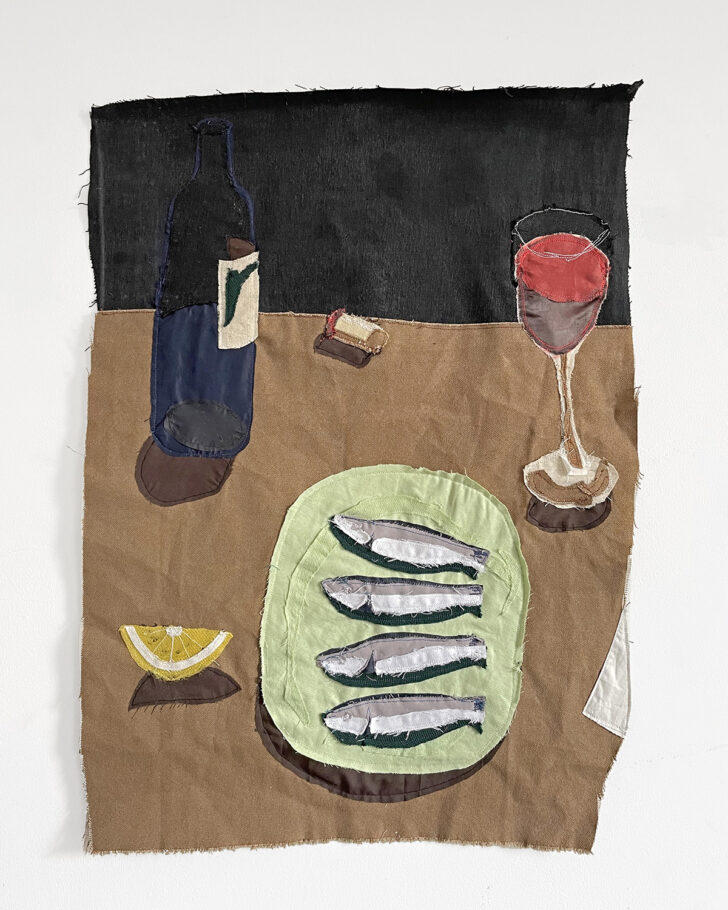
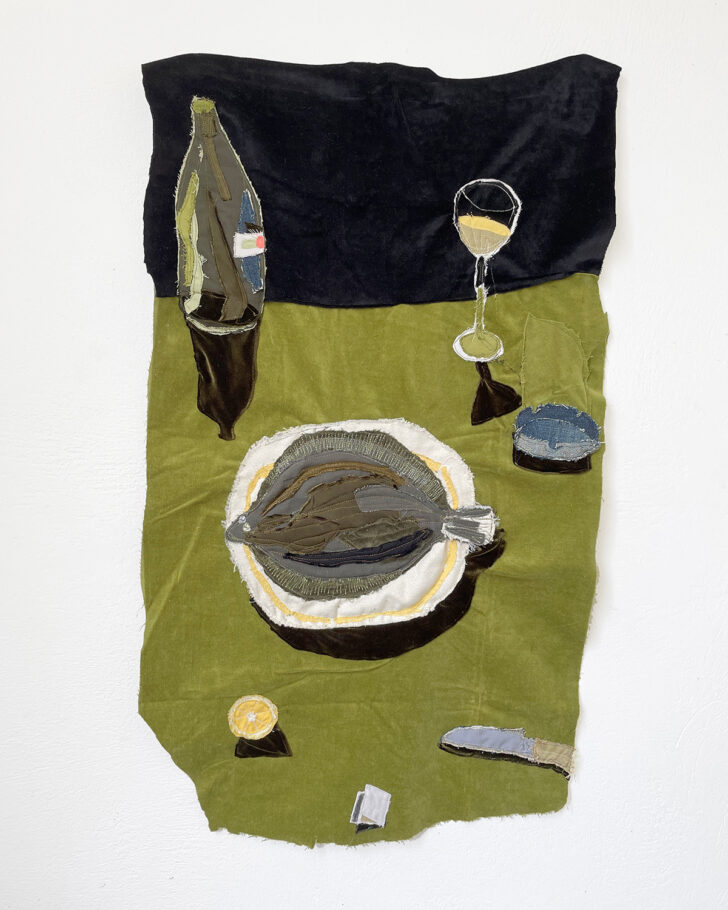
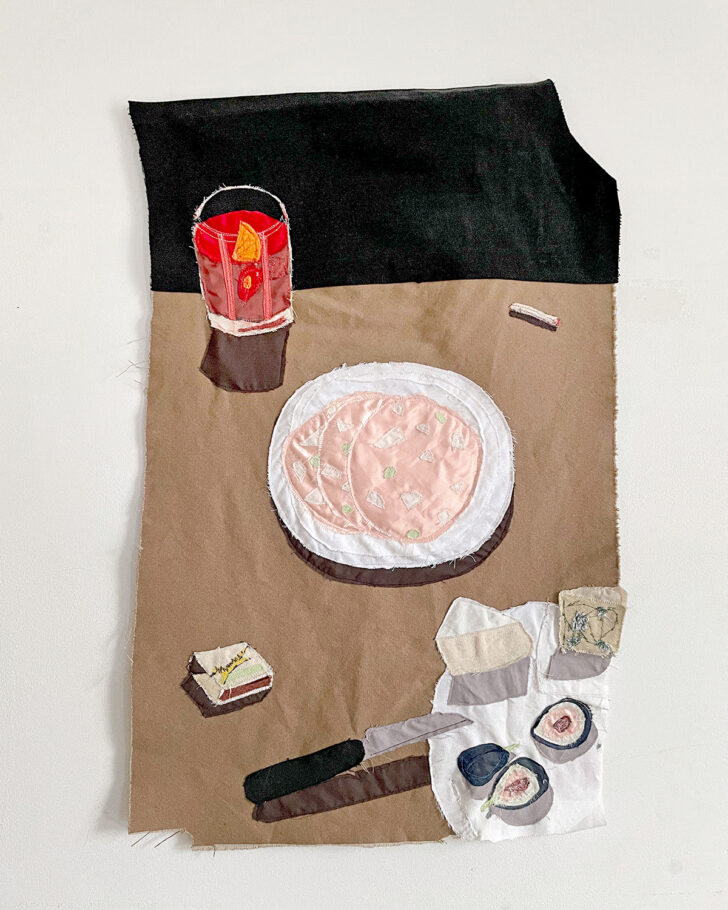
Has there been a learning curve when it comes to working with the scrap sheet steel and discarded cooking oil barrels?
I’m pretty much self-taught when it comes to working with metal, though I made the most of learning from the excellent technicians at the RCA as well as at the different workshops where I’ve been making since graduating. And there has definitely been a steep learning curve to working with scrap metal, especially the discarded cooking oil barrels which can be so thin that it is difficult to weld the pieces together without burning through them in the process. Or learning how to control the piece so that it doesn’t blow welds open when the piece is being blackened with a torch. There is a lot of working across different methods like TIG and MIG welding, and trial and error, but I really enjoy this sort of open-ended problem solving where there isn’t necessarily a video on YouTube or something to direct me, and instead I just have to find my own way through — and sometimes end up with a slightly different result than what I may have had in mind initially.
What’s been inspiring or influencing you lately?
I’ve been back in Philadelphia recently, and I’ve had the chance to take some day trips out to Lancaster, Pennsylvania (known as Amish Country) to see some of the antiques and material culture in that area — from rough-hewn beams which make up a barn, to patched quilts and vernacular furniture using local materials, with hand forged iron hardware such as hinges, latches, etc. I love seeing these pieces because you can see the hand of the maker, and the work has a timelessness about it, even if it has years of patina built up. While I’d like to think that I’m not really a Luddite, so to speak, I am drawn to the no-frills problem solving which must have been involved in creating those works, the self-reliance or interdependence of the craftspeople/makers involved, and the honest, simple construction of the pieces which may outlast their contemporary counterparts.
I’ve also been recently frequenting the Barnes Foundation in Philadelphia which has an incredible collection of Impressionist and modern paintings which are displayed salon-style, intermingled and in conversation with countless pieces of wrought iron hardware and objects, ornate dowry chests, mortise and tenon chairs, candelabra, etc. I’m inspired by the individual objects, imagining how they were made, but also struck by how they work in concert with one another.
But I’m a bit of a magpie in taking inspiration from wherever it comes, whether that’s at museums, exhibitions or openings around London, or things I see online.
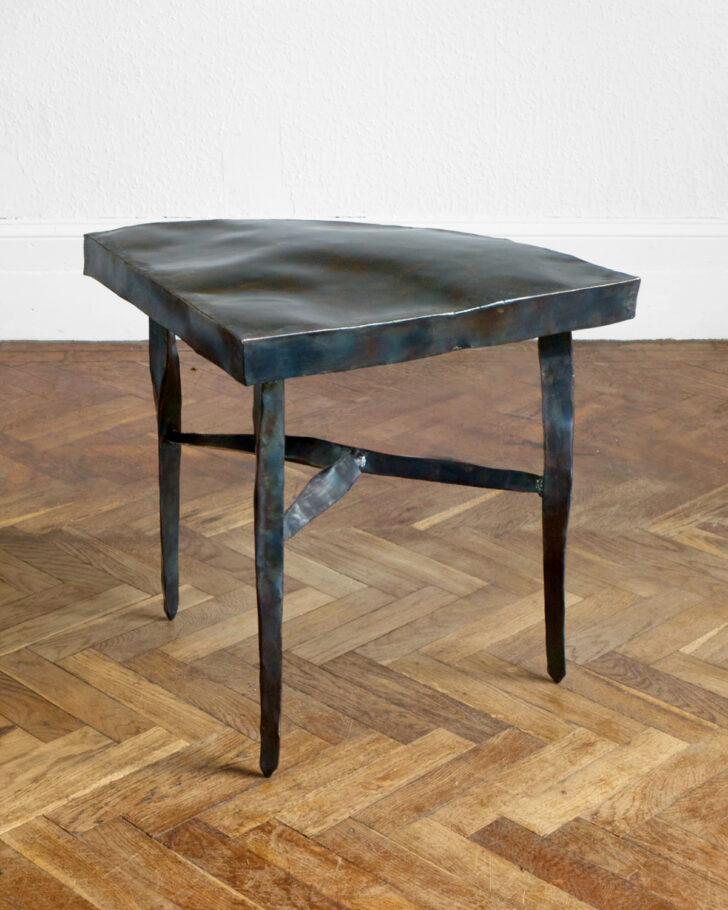
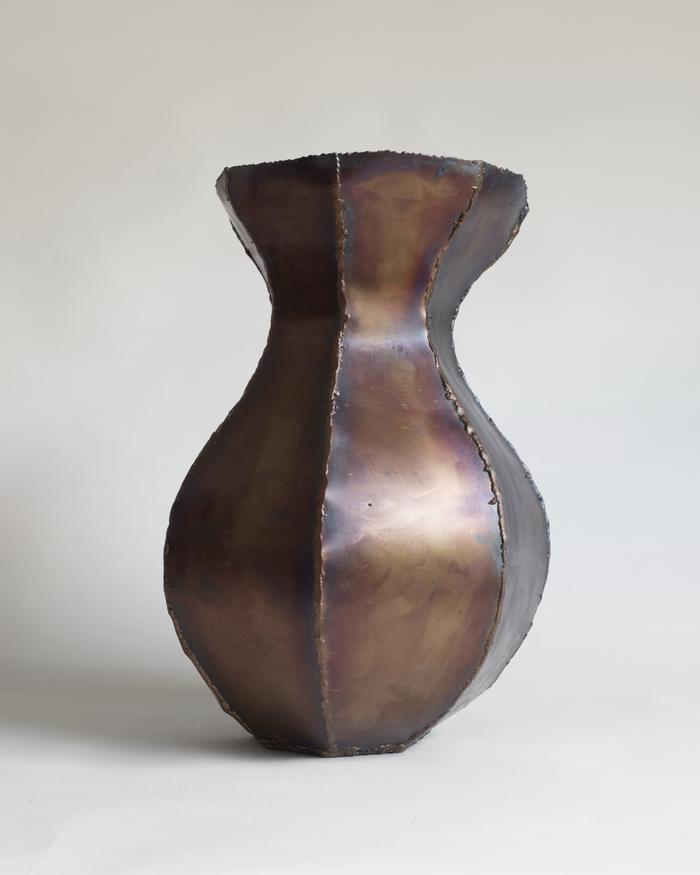
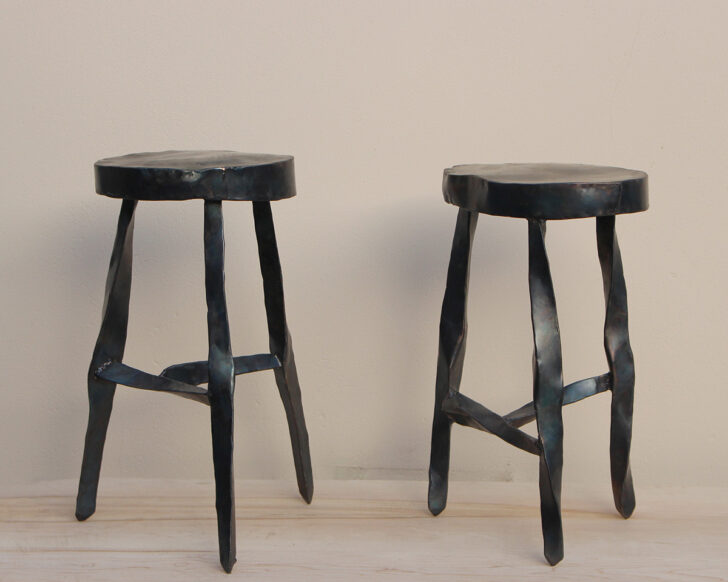
Do you feel like where you live has a bearing on your work? Either generally or in terms of the local design scene?
Despite being able to see this daily barrage of art and design from all over the world on my phone, I think where I live definitely has a bearing on my work. And with the long tradition of crafts in the UK, I think it would be impossible for me to not be influenced by some of that sensibility. Whether it’s biking around London and seeing details of the city, or visiting the numerous museums and houses/estates open to the public, I think I inevitably absorb some of the visual language and aesthetics of the place. For example, during Covid I was inspired by photos of English bodgers creating Windsor chair parts in the forest, to the point where my flatmate, Andreas Kamolz, and I created a spring-pole lathe on our terrace from scrap wood, to use to turn branches we’d gather from the park into pieces of mortise and tenon furniture, using a gauge we’d fashioned from a metal clothes rack.
Also seeing what other artists and makers in London are creating and exhibiting is very important in my mind to locating and furthering my own practice. That’s something that both the RCA (and its extended alumni network of artists and makers) as well as the communal workshops I’ve been a part of have provided, in getting to see a wide range of practices and interests, and this cross-pollination of ideas, techniques, different uses of material, etc., which I find to be very inspiring and motivating.
You’ve been collaborating with Natalia Triantafylli, who focuses on ceramics. How did that come about?
Natalia and I graduated together from Design Products at RCA in 2021. We are both very much hands-on makers, curious about materials and their properties, different methods of making, as well as being interested in revisiting more classic forms through a contemporary lens, with Natalia working with various materials and a focus more specifically on ceramics.
Although our practices are quite different, as well as the materials we’re working with, there seems to be something complementary about our work when it comes together, and with our shared studio in South London we’re continuing to explore this combination. Often one of us will have an idea for an object, or Natalia will have a ceramic lampshade or cabinet door piece for example, and then we will try and figure out a way to incorporate these into metal structures without them being incongruous. It’s a non-prescriptive way of working which I think suits both of us well. And combining our individual practices works well in that, for example, it isn’t easy for Natalia to get big with a structure like a floor lamp or dresser because of the limitations of ceramics/kilns, but also, I can’t get the effects of translucency and color without her work incorporated.
Are you working on anything new that you’d like to share?
I’m currently working on creating a series of objects in collaboration with London based maker Leo Kaspar who works mainly in slumped, and painted glass. These pieces — sconces, tables, shelves, floor and table lamps — will be part of an exhibition with the gallery Tiwa Select in New York in the spring. Natalia and I are also showing some new collaborative work with Max Radford Gallery at the Collectible Fair in Brussels in March. Along with ongoing commissions and projects for Atelier LK, I’m working on a large UK based project for them which will be finished this summer. Apart from that, I’m working on more fabric scenes and other metal objects either for commissions or just for the sake of making something new.
